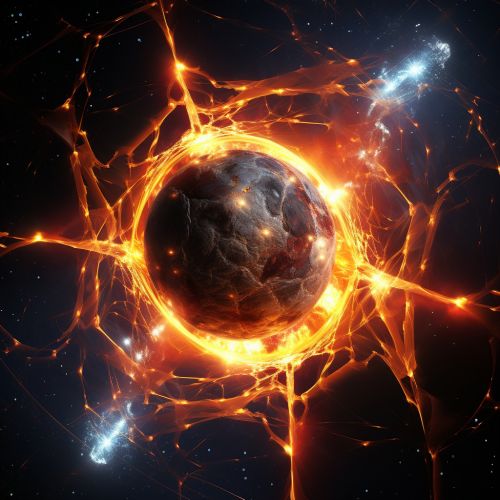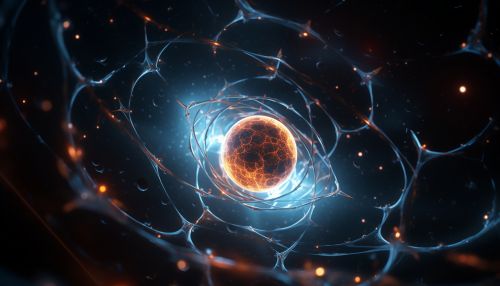Proton-proton chain reaction
Introduction
The proton-proton chain reaction is a sequence of nuclear reactions which results in the fusion of hydrogen nuclei (protons) into helium. This process, which occurs in the cores of main sequence stars such as the Sun, is the dominant energy source in these stellar bodies. The proton-proton chain reaction is one of two sets of fusion reactions by which stars convert hydrogen into helium, the other being the CNO fusion cycle.


Overview
The proton-proton chain reaction consists of several steps, with the net result being the conversion of four protons into one alpha particle (helium nucleus), two positrons, two neutrinos, and six photons. This process releases a significant amount of energy, which is primarily in the form of kinetic energy of the helium nucleus and the two neutrinos. The released energy is the source of the Sun's heat and light.
Detailed Process
The proton-proton chain reaction involves several individual reactions. The first step is the fusion of two protons to form a deuteron (a nucleus consisting of one proton and one neutron), a positron, and a neutrino. This reaction is extremely slow because it involves the weak nuclear force. The positron quickly annihilates with an electron, and their mass energy, as well as their kinetic energy, is carried off by two gamma ray photons.
The deuteron produced in the first step can fuse with another proton to form helium-3, releasing a gamma ray in the process. This reaction is much faster than the first step because it involves the strong nuclear force.
In the Sun, two helium-3 nuclei can then fuse to create a helium-4 nucleus (two protons and two neutrons) and two protons. This reaction releases more energy, in the form of kinetic energy of the helium-4 nucleus and the two protons.
Energy Release
The total energy released in the proton-proton chain reaction is about 26.73 MeV. Most of this energy is carried away by the helium-4 nucleus (the alpha particle) and the two neutrinos produced in the reactions. The energy carried away by the neutrinos is lost, as these particles interact very weakly with matter and escape from the Sun. The energy carried away by the alpha particle is eventually converted into heat and light, as it slows down in the solar plasma.
Variations
There are also several branches of the proton-proton chain that involve the production of isotopes of beryllium and lithium. These branches are less common in the Sun, but they become more important in more massive stars. The most important of these branches involves the fusion of a helium-3 nucleus with a helium-4 nucleus to produce beryllium-7, which can then capture an electron to become lithium-7.
Role in Stellar Evolution
The proton-proton chain reaction plays a crucial role in the evolution of stars. During the main sequence phase of a star's life, the proton-proton chain is the dominant energy source in stars less massive than the Sun, while the CNO cycle dominates in more massive stars. As a star exhausts its hydrogen fuel, it evolves off the main sequence and undergoes changes in its structure and energy production processes.
